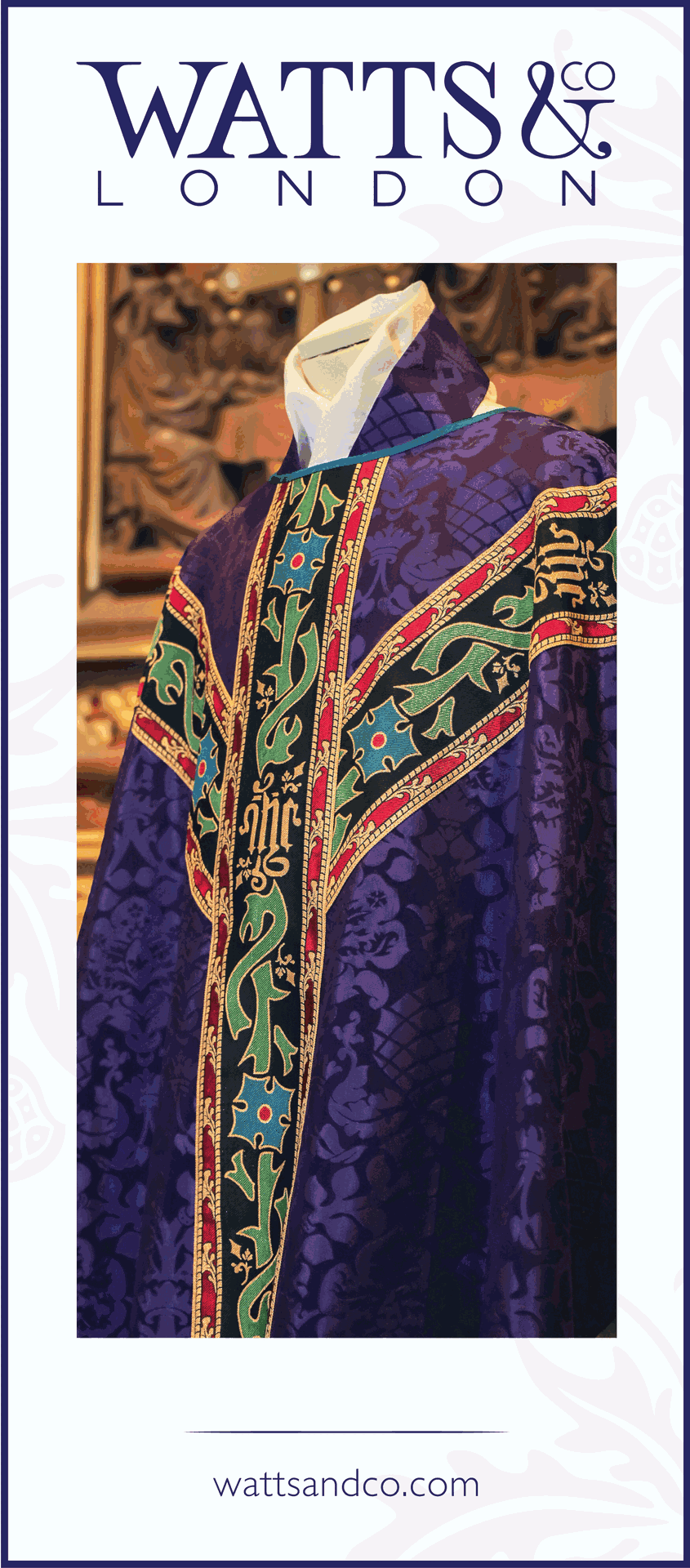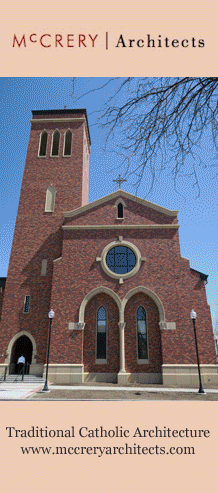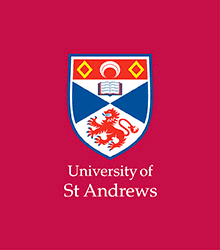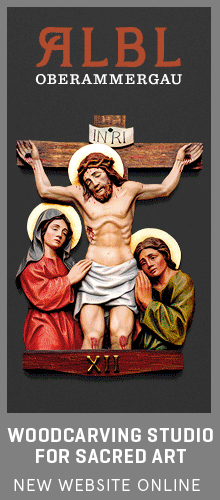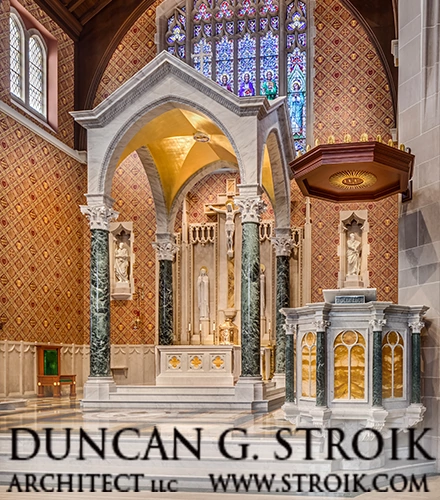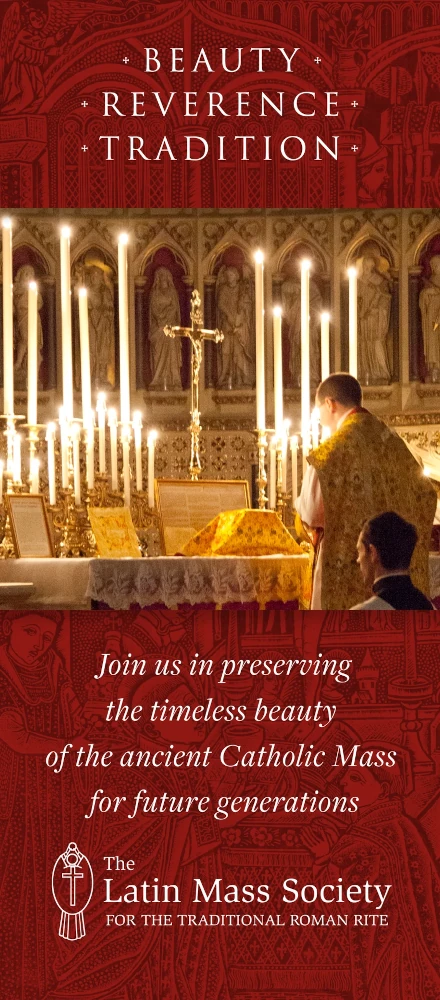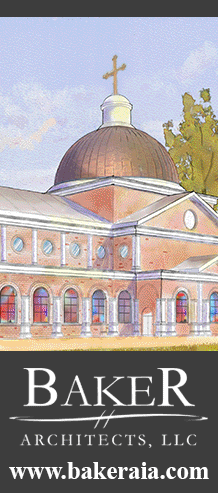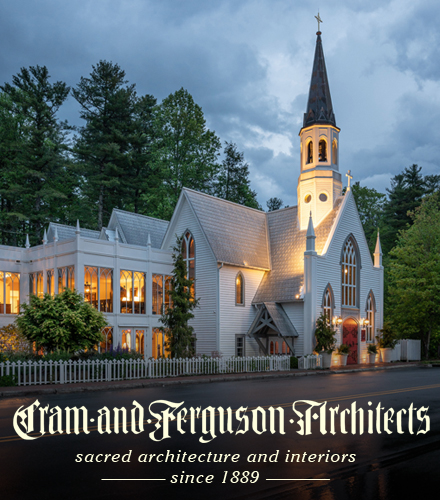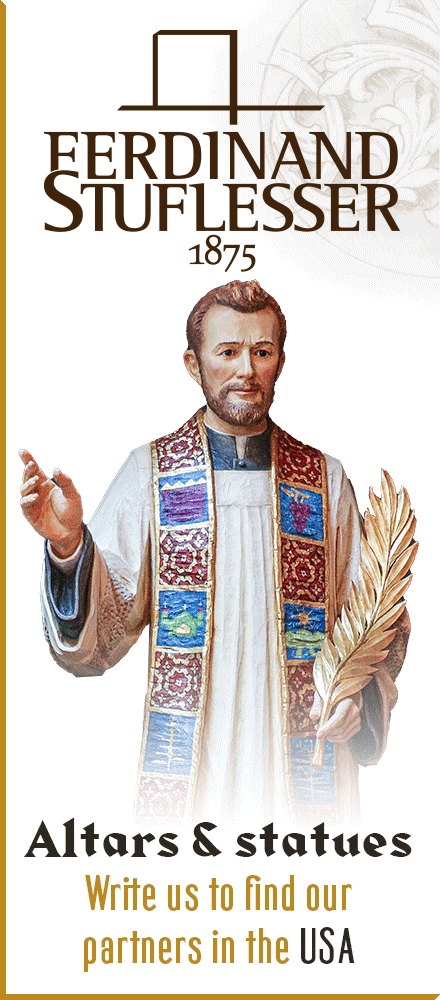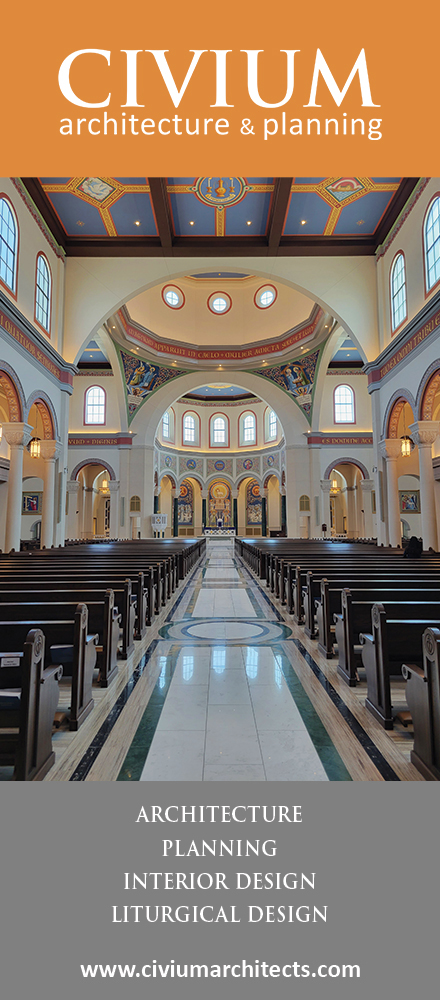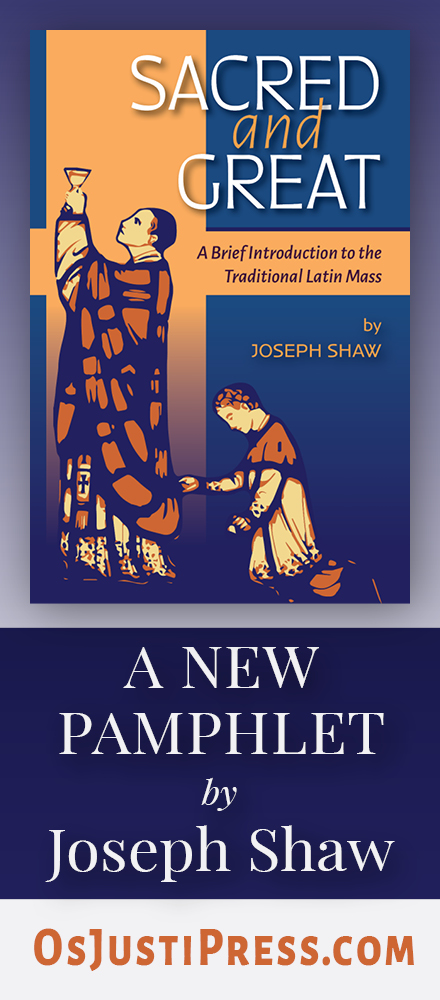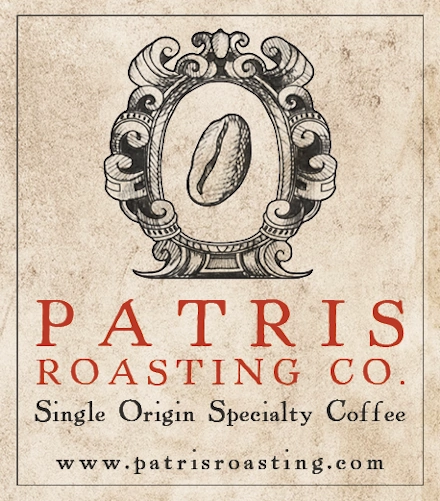at St. Etheldreda's in Ely Place, London. Built in the 13th century and tucked away from a main thoroughfare, St. Etheldreda's is a testament to the tenacity of those whose respect for the Faith and its tradition have kept the Roman church alive in England through years of division and unrest. Read its fascinating history.
Among the many treasure's at St. Etheldreda's are its Sunday Novus Ordo Masses, complete with plainchant and polyphonic Ordinaries, Gregorian Propers,and myriad motets and organ offerings. View the current schedule of upcoming Masses and liturgies.
There was some discussion in the blogs a few months back about doing the Dies Irae Sequence before the Gospel, and in fact, about the wisdom of the doing the Dies Irae at all in Novus Ordo funeral Masses. Some felt that since the Dies Irae had not been banned outright, that it was fine to proceed and include the sequence in its proper spot. Others weighed in with the opinion that it was probably most prudent to do the Dies Irae as an offertory or communion meditation in this day and age.
It is noteworthy that a parish like St. Etheldreda's, an established witness to the dignity, beauty and holiness of the Church's living tradition, sings the Dies Irae sequence for requiem Masses on a regular basis.
The present Choir is one of only a handful of fully professional Roman Catholic church choirs in the country, and has its origins in the choir of men and boys which Theodore Tanner directed from 1908 to 1948 and in the mixed choir of local singers who continued his work.
In the late 1970s, professional singers were gradually engaged and the choir evolved into its present form. It sings the Latin Mass each Sunday morning at 11 am and on major Feast Days and Solemnities, with a wide and varied repertoire ranging from plainsong and 16th century polyphony to music of the present day.
The Director of Music is Paul Gillham and the organist is Iestyn Evans.
Saturday, April 01, 2006
The Living Tradition defines the Novus Ordo
AnonymousMore recent articles:
The Feast of Saint Mary of EgyptGregory DiPippo
The feast of St Mary of Egypt has never been on the General Calendar, but it is often found in the supplements of the Missal and Breviary “for certain places.” April 2 is the most common date, but in several places it was kept on April 9, and in the Byzantine Rite it is on April 1. The Golden Legend and the Roman Martyrology note that she is also...
Sitientes Saturday, The Last Day of LentGregory DiPippo
In the liturgical books of the traditional Roman Rite, today is the last day of “Quadragesima”, the Latin word for Lent; since the mid-ninth century, tomorrow has been called “Dominica de Passione”, usually translated in English as “Passion Sunday.” The last two weeks of the season are collectively known as “Tempus Passionis – Passiontide”; the cu...
My Interview on Holy Week with Christopher Jasper on Pipes with AugustineGregory DiPippo
A few days ago, I gave an interview to Mr Christopher Jasper, the founder and director of the online Gregorian Chant Academy. The main subject of our interview is the various reforms of Holy Week, but we touched several related issues as well, such as the mindset of the whole project of liturgical reform in the 20th century. I make bold to suggest ...
The Offertory Incensation, Part IMichael P. Foley
Lost in Translation #122After preparing and offering the gifts and himself, the priest blesses the incense. As he places three spoonfuls of incense onto a live coal, he says: Per intercessiónem beáti Michaélis Archángeli, stantis a dextris altáris incénsi, et ómnium electórum suórum, incénsum istud dignétur Dóminus benedícere, et in odórem suavit...
Music for Lent: The Media VitaGregory DiPippo
The hour of Compline is far more variable in the Dominican Office than in the Roman, often changing the antiphon of the psalms, the hymn, and the antiphon of the Nunc dimittis. This was true of most medieval Uses, and especialy in Lent, a season in which the Dominican Use brings forth some its best treasures. The most famous of these is certainly ...
Tenebrae: The Church’s “Office of the Dead” for Christ Crucified Jennifer Donelson-Nowicka
The Catholic Institute of Sacred Music cordially invites you to the final event of its 2024–2025 Public Lecture and Concert Series.Tenebrae: The Church’s “Office of the Dead” for Christ CrucifiedLecture by James Monti (Dunwoodie, New York)Saturday, April 12, 10:00 a.m. PDT (1 p.m. EDT)From at least as far back as the sixth century, the Church has b...
The Twentieth Anniversary of the Death of Pope St John Paul IIGregory DiPippo
Today marks the twentieth anniversary of the death of Pope St John Paul II, whose reign of almost 26½ years is the third longest in history, after those of St Peter (traditionally said to be 32 years, one less than Our Lord’s earthy life), and Blessed Pius IX (31 years and nearly 8 months.) In the days leading up to his funeral, roughly 4 million p...
On the Sanctification of TimePeter Kwasniewski
In “Processing through the Courts of the Great King,” I spoke of how the many courtyards and chambers of the King’s palace prior to his throne room, or the many precincts and rooms of the Temple leading up to the Holy of Holies, could be a metaphor of a healthy Catholic spiritual life that culminates in the Holy Sacrifice of the Mass, but surrounds...
“Now About the Midst of the Feast” - Christ the Teacher in the Liturgy of LentGregory DiPippo
Today’s Gospel in the Roman Rite, John 7, 14-31, begins with the words “Now about the midst of the feast”, referring to the feast of Tabernacles, which St John had previously mentioned in verse 2 of the same chapter. And indeed, the whole of this chapter is set within the context of this feast.The Expulsion of the Money-Changers from the Temple, th...
The Apple of Her EyeDavid Clayton
“The Lord God planted a garden in Eden, which is in the east, and there he put the man he had fashioned. From the soil, the Lord God caused to grow every kind of tree, enticing to look at and good to eat, with the tree of life in the middle of the garden, and the tree of the knowledge of good and evil.” (Gen. 2, 8-9) This 17th century painting...

